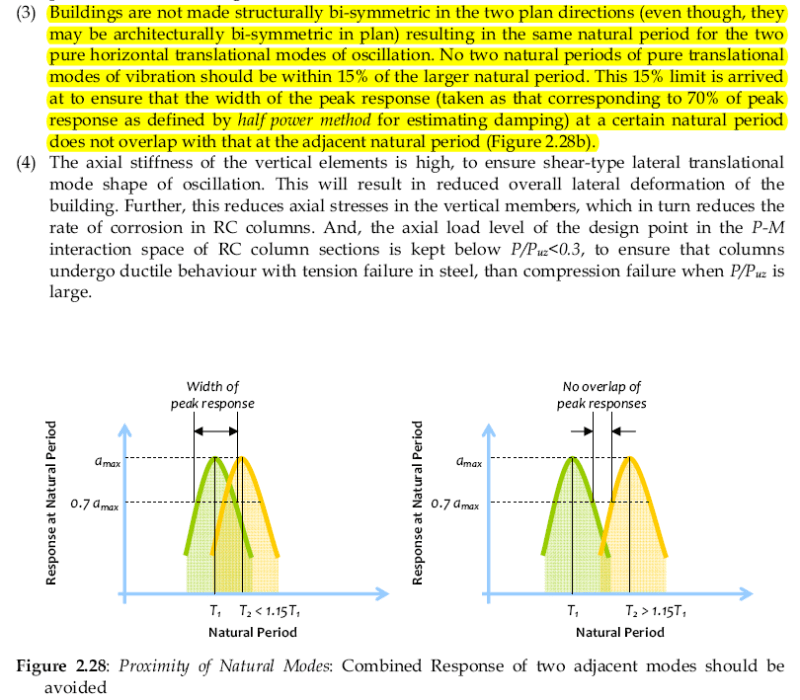Hello!
I analyzed a fairly regular and symmetric building in ETABS and I was checking the results of Modal Analysis as per IS 1893 (Part 1): 2016. Code says that "the fundamental lateral natural periods of the building in the two principal plan directions should be away from each other by at least 10 percent of the larger value". My modal participating mass ratios are coming out to be okay but this required difference between the natural time periods is not being fulfilled. Is this a cause for concern? What is the physical significance of having this difference between the fundamental lateral natural periods?
I analyzed a fairly regular and symmetric building in ETABS and I was checking the results of Modal Analysis as per IS 1893 (Part 1): 2016. Code says that "the fundamental lateral natural periods of the building in the two principal plan directions should be away from each other by at least 10 percent of the larger value". My modal participating mass ratios are coming out to be okay but this required difference between the natural time periods is not being fulfilled. Is this a cause for concern? What is the physical significance of having this difference between the fundamental lateral natural periods?

